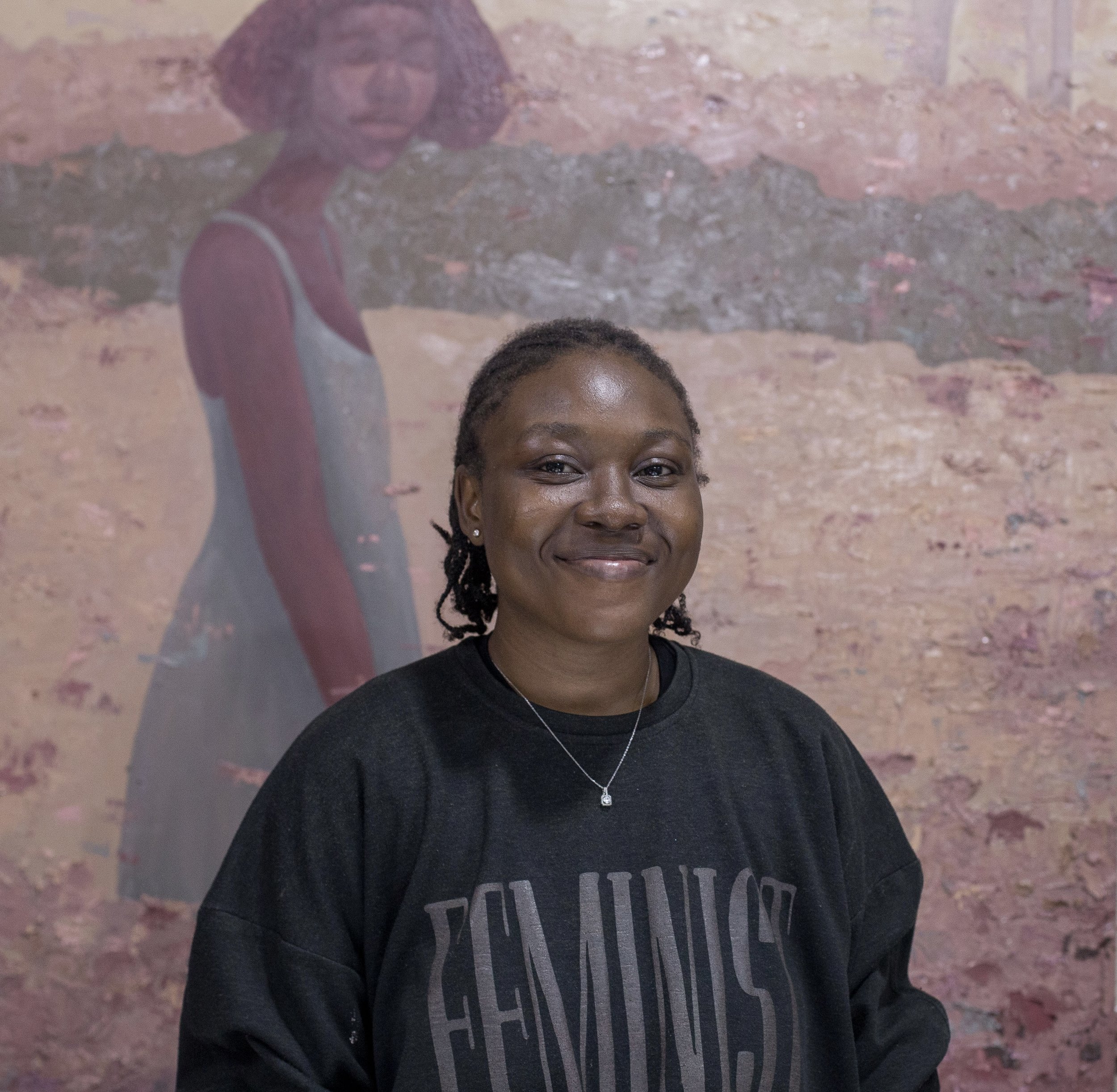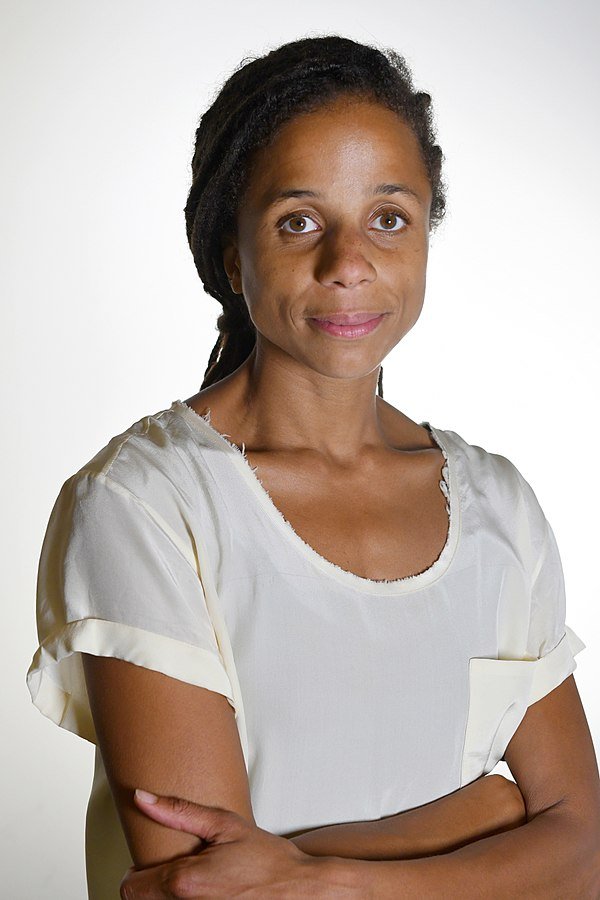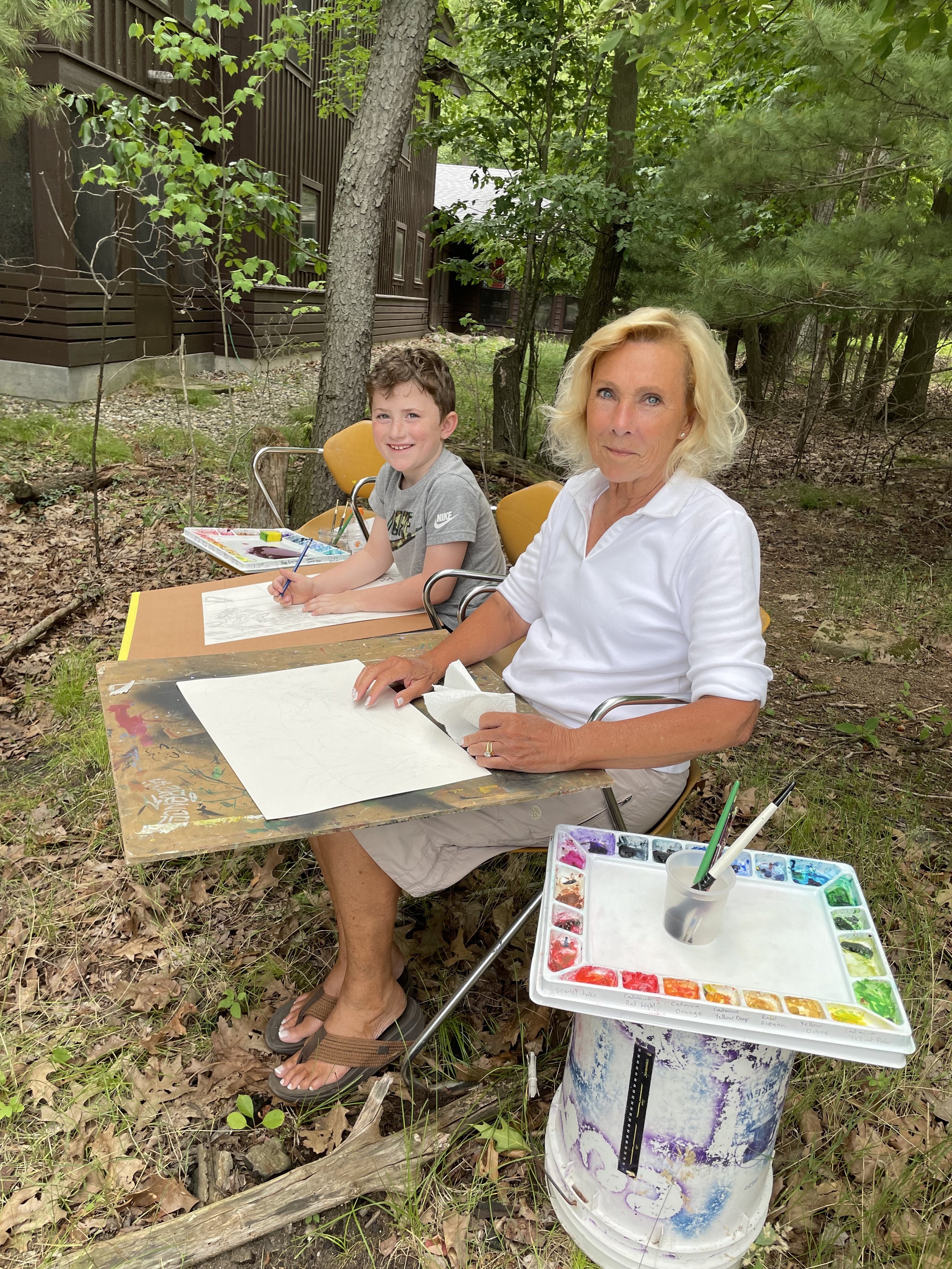Sarah Ann Banks talks digital art, surfing eBay, and telling the story of a baby mammoth.
Like many artists, Banks shares time between her studio practice and contracted gigs. In her case, such gigs include design work for esteemed brands such as Harper's Bazaar, Urban Outfitters, and Coach. Banks channeled her ever present spark while discussing these opportunities, but there was no comparison for the enthusiasm that emerged when she started discussing her studio practice. Here she allows her imagination and current obsessions to carry her to the furthest reaches. Inspirations include deep dives into Ebay where she enjoys hunting for vintage toys made in the USSR. “They have an amazing talent for [making] the most haunted squeak toys,” she explained with a laugh. During my studio visit in July, Banks was working with an antiques seller to secure a vintage Edward Mobley elephant-shaped toy box. Banks follows these obsessions and threadlines with dogged dedication. This focus has proved a major asset to the narrative component of her work. “I get fixated on something I see and then I try to develop a backstory,” Banks explains.
WolfDog by Sarah Banks. Image courtesy of the artist.
This dedication and attention results in rich characters at the forefront of her designs and complex landscapes composing the backdrop. Also present is the whimsical inspirations sourced from Banks’s childhood. Those familiar with Littlest Pet Shop and My Little Pony will see the resemblance in the luxurious eyelashes and bobble-sized heads of Banks’s creations. Don’t let this whimsy be mistaken for simplicity. Fueling her worlds are inspirations from science-minded podcasts. In her hydra series she explores anti-aging properties and the eternal nature of these mysterious (and very real) species of the Cnidaria phylum. And as one might expect from someone hunting Ebay for USSR-era children’s toys, some of Banks’s characters house a distinctly haunted look inside their sweet, doe eyes.
Most recently, the character that has been knocking on the door of Banks’s imagination is a mammoth. Specifically, a baby mammoth, once frozen in the ice, who has unfrozen in a heat wave. The narrative takes inspiration from biotech company Colossal BioScience, which is working to bring extinct species (such as the mammoth) back to life through genetic engineering. She is particularly fascinated by the paradox of such an ancient creature in infant form. “I'm interested in making some sort of body of work that's all about one story,” Banks says, which contrasts her more recent works that focus on small, unrelated stories. Her hunch is that this baby mammoth might be the perfect lead. This isn’t the only shift Banks is contemplating, she’s also interested in converting her digital renderings to paintings and drawings.
Mammoth Caterpillar by Sarah Ann Banks. Image Courtesy of the artist.
When Banks first came to Ox-Bow during the summer of 2018, she wasn’t strictly a digital artist. At the time she was an undergraduate student at the School of the Art Institute of Chicago. While pursuing her degree, she shared her focus between ceramics and digital art. Since graduating, Banks stepped away from ceramics and focused on deepening her digital practice. But now she’s itching to expand that practice through different forms. All this coincides with Banks's return to Ox-Bow. Six years after her first visit, Banks was invited to campus for a three week stay as one of two 2024 Alumni Artists-in-Residence. In preparation for her time at Ox-Bow, where she believed the environment would be most conducive to manifesting these more physical works, she took a class from an artist who specializes in turning 3d artwork to oil paintings.
Mammoth Risograph by Sarah Ann Banks. Image courtesy of the artist.
Once on campus, Banks wasted no time unearthing the mammoth from her subconscious. After setting up her computer, she began rendering the baby mammoth. Through various iterations, Banks established the dynamic range of this ancient, infant creature. In one depiction, two mammoths frolic through a field of flowers in a carefree yet deeply feverish dream. Another showcases the mammoth’s capacity for loneliness as tears well in their eyes. In yet another, the creature, abstracted to only its head, calls to mind a talisman or deity. Banks translated two of these portraits into oil paintings, using the methods of the tutorial she took before arriving at Ox-Bow. The translation from digital to physical, felt poetically reminiscent of the mammoth's own journey from DNA to physical. While the oil paintings can’t capture the same literalism of digital work, the layers of paint and depth of color created their own sort of realness.
Mammoth Spiral by Sarah Ann Banks. Image courtesy of the artist.
Continuing with more physical translations, Banks also utilized Ox-Bow’s print studio during her residency. In particular, she experimented with the Risograph. “In 3D [work] you can be endlessly tweaking,” Banks explained, but many of these details fade amidst the granular nature of Risos. In the instance of the flowery fever dream, the faded quality works in favor of the piece. It’s as if we're viewing the young mammoth through a coming-of-age camcorder shot. Through experimentation of form, Banks is able to capture soulful portraits with oil painting, nostalgia with Riso prints, and the hyperreal with digital. Over the course of three weeks, Banks lived into the quintessential Artist Residency experience. She dug deep into her practice, experimented with new forms, and invested in the resources on campus. At the intersection of Bank’s passion and Ox-Bow’s offerings, she brought plans and visions to life and the story she produced was one so characteristic of her work: wholly whimsical and deeply soulful.
Sarah Ann Banks is a digital artist based in Brooklyn, New York, working primarily with 3D animation software. She uses the virtual space to build an expansive world full of fantastical objects and creatures. These creations are born from vintage objects, nature, and her own personal narratives. Banks develops stories and personalities that overlap between her works, updating with her own interests and daily life. These artworks often act as a diary, tracking her daily interests and fixations. The content ranges from distressed carnival prizes to moody gargoyles. Banks received a BFA from the School of the Art Institute of Chicago in 2019. Some of her recent clients include Instagram, Urban Decay, Coach, and Harper’s Bazaar.
This article was written by Shanley Poole, Engagement Liaison & Storyteller and was based on interviews conducted in April and July of 2024.

















































































